Henschel Hs 129 "Panzerknacker"
The Henschel Hs 129 was the only aircraft of World War II that was designed specifically for destroying armour. It was a completely conventional aircraft with a slender triangular slim fuselage. Therefore, the cockpit was extremely cramped and surrounded by 6-12 mm thick armour that weighed 2380 lbs! The canopy consisted of small panes of glass 75mm thick. The small size of the cockpit resulted in the Revi gunsight and the engine instrumentation to be positioned outside the cockpit! What is surely unique is the positioning of the engine instrumentation on the engine nacelles!
Armament for killing tanks varied from having a centreline 30mm - 75mm cannon. On the side of the nose were two 17mm machine-guns and two MG 151 20mm cannons. Provision was also made for two small racks under the wings to accommodate anti-personnel bombs.
My Henschel Hs 129 is the excellent 1/48 scale Hasegawa kit. It depicts a very weathered machine from IV Panzer Schlachtgeschwader 9 based at Czernovitz, Russia, March 1944.
During the Russian winter the Hs 129's from SG 9 had their camouflage over-painted with white distemper in the field. Since the white paint was soluble it easily washed off leaving the aircraft with a well worn appearance. I used ModelMaster enamels and Doc O' Brien's weathering pigments to paint and weather the model.
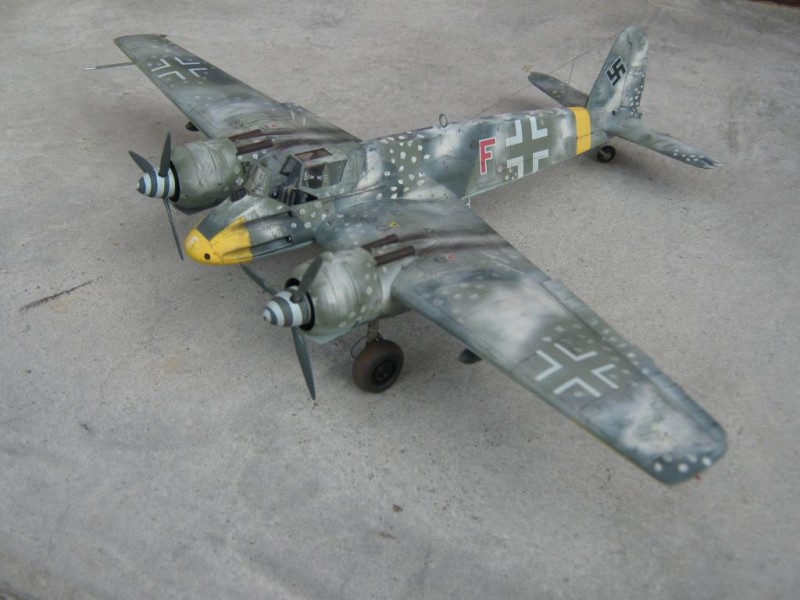

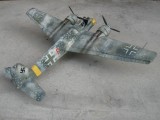
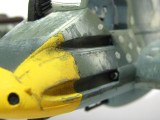
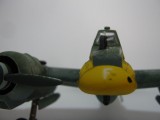
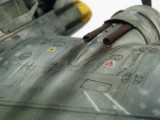
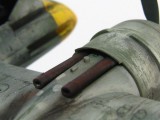
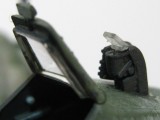
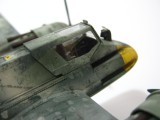
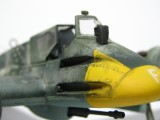
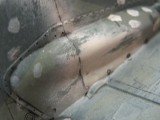
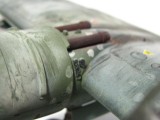
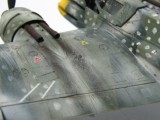

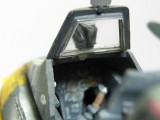
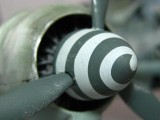
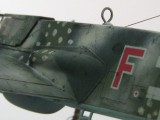
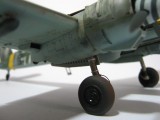
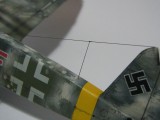
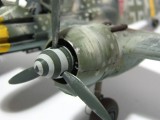
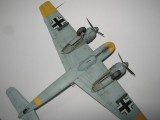

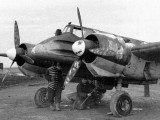
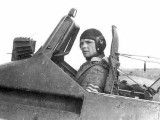
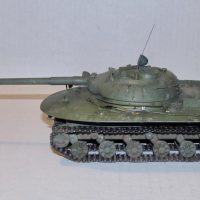

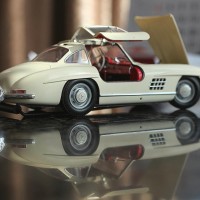
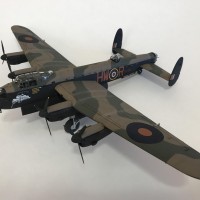
I guess that was the A-10 of WWII…..nice work on the model Morne, especially the weathering and the photos.
Thanks Jack. Definitely the German A-10 of WW II !
Excellent rendition of a rarely seen build...nice work. The A-10 correlation is spot on.
Thanks Craig!
I really like the photographs, Morne, they show off your weathering and finish very well.
Hi George. Thanks for the thumbs up on my build.
Another great depiction of a hard ridden beast.
With you weathering skills have you done any armor?
Hi Al. Thanks for the positive comments. I don't build any armor. I have a couple of armor kits from the Vietnam war in my stash. Maybe I should have a go at them!
Very nice finish Morne - out of curiosity, do you know why there were the white dots in addition to the main areas of white? I see it clearly in the photos of the aircraft, and you did a great job rendering it on your model, I was just curious if there were some specific purpose to them.
I have heard that is a very nice kit, and you certainly did a great job on it.
Hi Paul. I read somewhere that the Germans applied this camo to their aircraft in the field to break up the shape and outline of the aircraft whilst parked out in the open. Personally I think whilst in flight over a snow covered landscape it might have helped to blend the aircraft in with the ground.
Morne, another beautiful finish. Outstanding work
Thanks for the thumbs up Rick!
Great work Morne, a brutal tank killer.
Nice weathering as per norm.
Well done mate.
THANKS !
another excellent build
Thanks! I think she would have looked even better had I used some aftermarket resin goodies for the fuselage gunbays.
Stunning ! Great effect on your weathering, whitewashed camos are always a challenge !
The last series of this fine aircrafts were armed with a 7,5 cm gun, developed from an army anti-tank gun, it was said, the aircraft flew a split second backwards, while shooting...
There were never enough of this aircraft, the Henschel factory were ordered to produce the Me 410 instead and shortly after they had to retool
for the Ju 388
Again, well done 🙂
Bernd
Thanks Bernd. Love building those German Tank killers.As a child I often listened to tales of how the Luftwaffe often came to the rescue as Panzer units nearly got overrun by Soviet armor that were superior in numbers.
Hi Morne, the Stukas were more numerous and more precise, my
father was also on the eastern front in 1941, he told me a lot about
Stukas as well, but this was before the Hs 129 was deployed.
After he was wounded, he came to a Flak unit in Hamburg, the next
aircraft he met there were four engined bombers...
Hi Bernd. The battle against the endless streams of Dicke Viermots... At the end of the war my Grandfather came over to South Africa and worked for Volkswagen in Uitenhage and the South African Railways.
Hi Morne, that sounds like a happy ending after this hell !
My dad was wounded again in Hamburg, but survived and
came in british captivity, there he drove trucks for their supply, With the skrewdriver from his Bedford, i still open
my color tins ! He was born in Berlin, but while driving in the Salzgitter area, he met my mother in 1946 and i was born in 1971 🙂
Hi Bernd. My grandfather also built models. He was more into ships and armor whilst my dad was more intetested in trains. I guess he has been the cause of my interest in models. My dad bought me my first models in 1982. They were Revell's P-40 Warhawk and Junkers Ju-88. That sparked my love for models and history. Today I am a history teacher with a special interest in military history. If only my daughter would show some interest in my hobby... 🙂
I totally agree with all the earlier comments. Great work Morne.
Hi Gregor. Thanks for the positive feedback.
Like!
Nice build & painting.
Thanks P.k !
Terrific model, Morne, incredible finish, detailing and weathering, 2 thumbs and 2 big toes up!
Thanks Ralph for the BIG thumbs up!
Love it. Well done. I have one done also, if you'd like to loom through my posts. We are in a rare club. 129 builders. 🙂
Hi Paul I did just that. Your Hs 129 is also a real superb build.
Morne,
My opinion only, but this is one of the ugliest airplanes ever. Being said, your model is an stunning piece of art. This is absolutely beautiful. I love it.
Ugly indeed! Very effective tank killer. They were used in North Africa and on the Eastern Front. Panzerknacker translates into tearing a tank apart. Building and weathering this a/c was a delight. An easy build as is the norm with Hasegawa kits. Thanks for the nice comment!
Morne - our club started a CoVid group build using our club site forum to keep the group connected, and two of my friends built a 129, encouraging me to pull an old Lindbergh 1/72 kit out of my stash. I've been looking around for inspiration and found this - WOW - what a beauty! I'm going to attempt to replicate what you've done on this as it is a real standout! Love it.
Greg it is very easy. Just the normal Luftwaffe splinter camo. I sealed the Modelmaster enamels with Future floorpolish. After allowing the Future four days to cure I sprayed a light coat of flat white over the model. After the white had cured properly I dipped a wide brush into mineral turpentine and dabbed it on a paper towel to get rid of most of the turpentine. The damp brush was then used to get rid of some of the white paint to replicate a well worn winter distemper scheme. The white dots were done with a nail art brush with a fine point. The model was again coated with Future and decals were applied. Decals were sealed with a thin coat of Future. Panel lines were done with dark brown water colour paint. A Matt varnish and some pastel dust for exhaust and gun streaking applied finished off the build. Good luck. Looking forward to seeing your Hs 129.